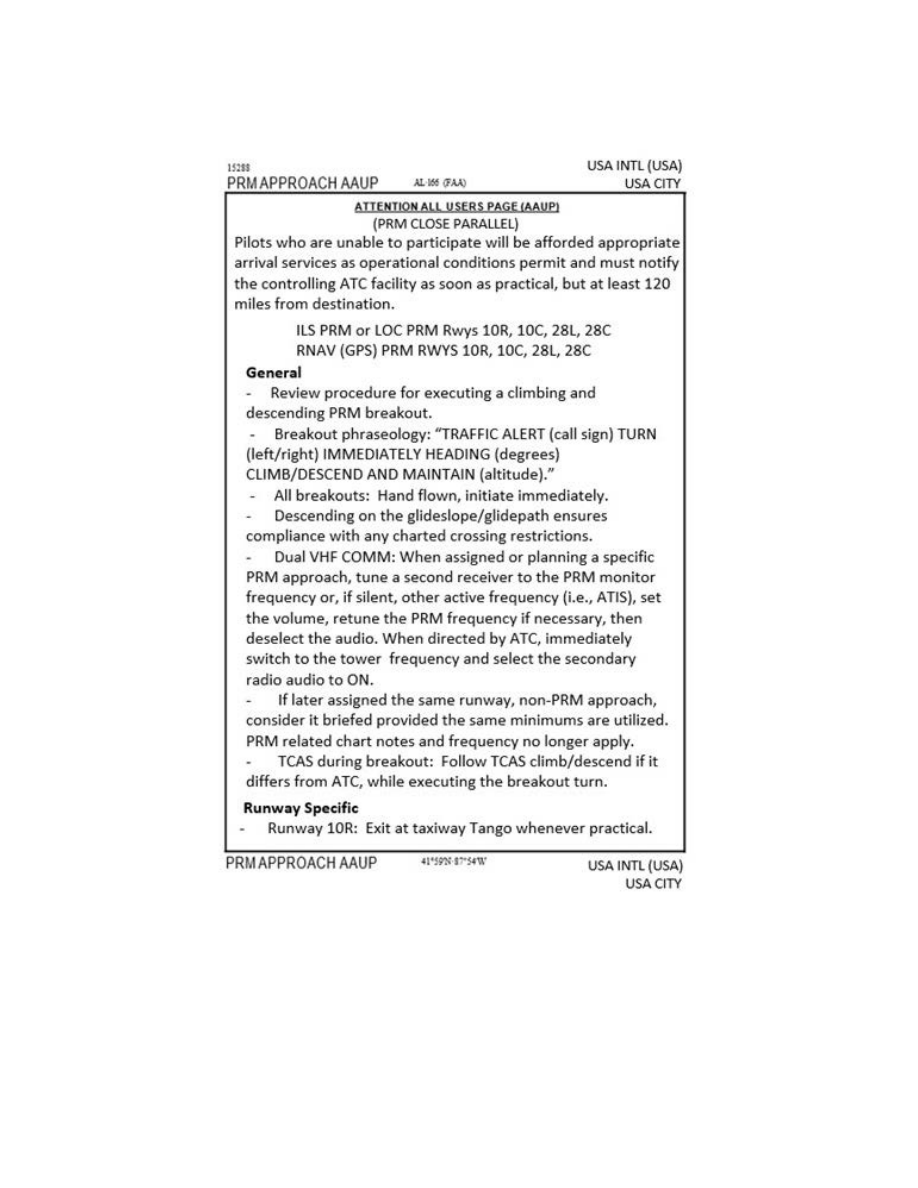
AIM
4/20/23
safely perform the circling maneuver at the circling published line of minima if the approach and circling
maneuver is properly performed according to aircraft category and operational limitations.
FIG 5
−
4
−
12
Example of LNAV and Circling Minima Lower Than LNAV/VNAV DA.
Harrisburg International RNAV (GPS) RWY 13
CATEGORY
A
B
C
D
LPV
DA
558/24
250 (300
−
½
)
LNAV/
VNAV
DA
1572
−
5
1264 (1300
−
5)
LNAV
MDA
1180 / 24
872 (900
−
½
)
1180 / 40
872 (900
−
¾
)
1180 / 2
872 (900
−
2)
1180 / 2
¼
872 (900
−
2
¼
)
CIRCLING
1180
−
1
870 (900
−
1)
1180
−
1
¼
870 (900
−
1
¼
)
1180
−
2
½
870 (900
−
2
½
)
1180
−
2
¾
870 (900
−
2
¾
)
FIG 5
−
4
−
13
Explanation of LNAV and/or Circling Minima Lower than LNAV/VNAV DA
g.
13 provides a visual representation of an obstacle evaluation and calculation of LNAV MDA,
Circling MDA, LNAV/VNAV DA.
1. No vertical guidance (LNAV).
A line is drawn horizontal at obstacle height and 250 feet added for
Required Obstacle Clearance (ROC). The controlling obstacle used to determine LNAV MDA can be different
than the controlling obstacle used in determining ROC for circling MDA. Other factors may force a number
larger than 250 ft to be added to the LNAV OCS. The number is rounded up to the next higher 20 foot increment.
2. Circling MDA.
The circling MDA will provide 300 foot obstacle clearance within the area considered
for obstacle clearance and may be lower than the LNAV/VNAV DA, but never lower than the straight in LNAV
MDA. This may occur when different controlling obstacles are used or when other controlling factors force the
LNAV MDA to be higher than 250 feet above the LNAV OCS. In FIG 5
12, the required obstacle clearance
Arrival Procedures
5
−
4
−
20